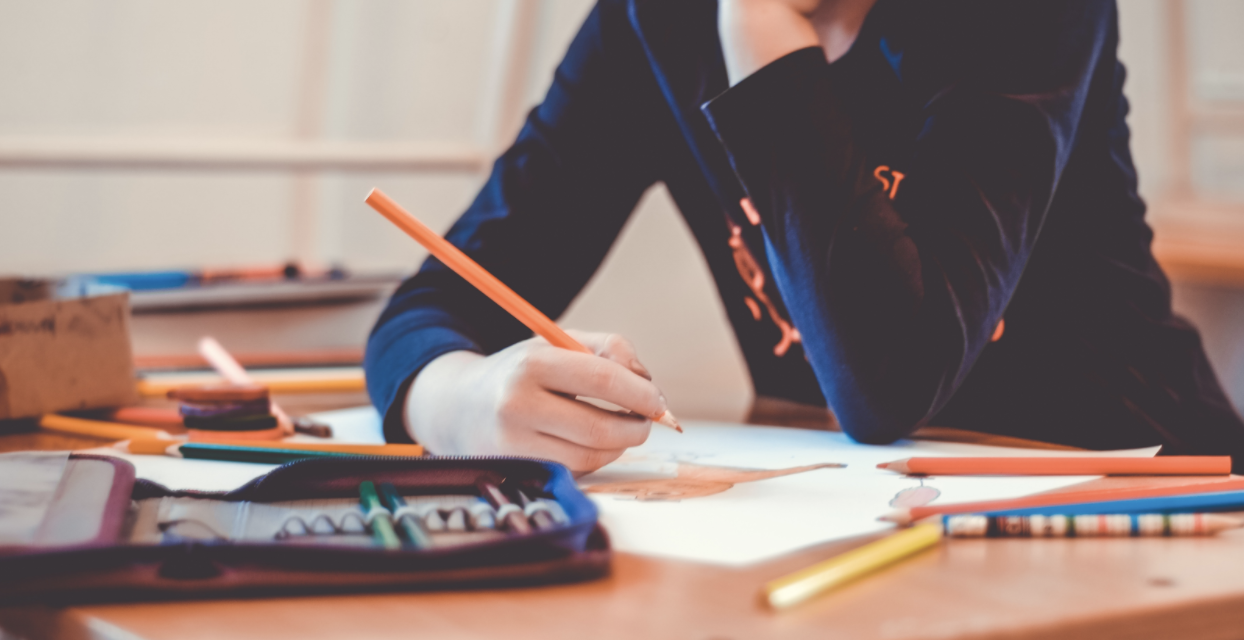The Distance Learning Climate and Its Impact on Mental Health
A little over a week has passed since the beginning of fall for some Virginia school districts. We follow up with Nicole, a mathematics educator of 39 years, to get feedback on her progress with distance learning. She shares her strategic implementations and what she expects from this new learning climate in the days to come. Furthermore, she discusses the emotional and mental impact distance learning has on her students as well as herself. Our conversation brought more awareness to the overall effects of the pandemic, extending beyond technology and into the realm of mental health.
I sat down with Nicole to ask her about the different aspects of her distance learning experience so far.
“I’ve been able to keep my students engaged”, Nicole says as she describes her virtual experiences so far in high spirits. In previous weeks, educators within her school district were intensely training on their new learning management system, Canvas, and effectively using Zoom to present lessons to their students. While this training was a huge learning curve for this more seasoned educator, she has been able to overcome obstacles by collaborating with other educators in help groups. She has witnessed progression in navigating the new systems from both students and herself so far.

A Week’s Worth of Progress
How has adapting to the new distance learning systems been for yourself and your students?
“It was a bit difficult adapting to Canvas and Zoom initially, however, there is enough support to get help when needed. Teachers have access to the student view so they are able to assist them with navigating. Canvas is used to house class learning materials and Zoom is used to present the lessons. Students have had issues with joining the correct Zoom class so teachers have been informed to provide the direct class link for students.”
Math is a difficult subject for many students, including myself at one point, how have your students worked through the problems?
“Because we haven’t got into the content just yet I can’t really answer this question. However, right now I’m just focusing on “get to know me” activities with the students to get an idea of their areas of difficulty and building their trust with me as their teacher. I do foresee students having difficulties when we get into translating algebraic expressions, but we’ll work through it.”
So far so good for this Virginia school teacher and her students. Now it is a matter of determining and setting the expectations for the coming days.
Framework for the Coming Days
Where is the bar being set? The plan for educators, like Nicole, should now be developing the framework for the rest of the semester and sustaining engagement. What will this look like? How will educators and students ensure the level of engagement is high?
What are your expectations for your classes from here on out?
“In the coming weeks we will be getting into the math content. I expect my classes to run the same as if we were in person. I expect my students to work through problems with me, so it is important that I engage them and encourage them to talk to me via Zoom.”
Do you have tips for other educators for maintaining engagement in the virtual sessions?
“Think like a kid. Think about what the student enjoys. Draw from the student’s interests and their learning style so that everyday they are glad they came.”
Do you think more training will be required as you all progress through the semester such as training to improve the virtual structure of the classes?
“Oh yeah! Most definitely! In fact, we have mandatory and voluntary training on Wednesdays where teachers can receive additional information and help in these areas. This will occur throughout the school year.”

Balancing Distance Learning with Life
I anticipate the rest of the semester to be a learning curve for educators and students not only in the classroom, but mentally and emotionally as well. According to Loades et al (2020), adolescents have reportedly experienced high levels of loneliness (Loades et al, 2020).There is a strong possibility that the isolation conditions due to COVID could lead to an increase in mental health issues of this group. This issue could be more apparent in children during their development stage. Educators and students have been placed in unfamiliar learning environments requiring much adjusting. Even with the semester just starting, Nicole has observed some impacts on the mental and emotional state of students.
What effects do you see distance learning and social isolation having on students’ mental and emotional health?
“Students want to be with their friends; however, they must understand that we are in a pandemic and it’s something that we have not experienced before. They are not able to make those physical connections and build relationships as they would face-to-face. I think it can make some students feel a bit lonely and give them anxiety about getting back into the classroom.”
It is even more important now to pay close attention to students’ mental health. The risks of developing mental health issues is much higher in adolescents compared to adults (Loades et al, 2020). COVID serves as a major influencing factor for increasing these risks. Loneliness and isolation also influence the chances of suicide caused by internalizing childhood events.
What about the students that may not have a stable home? What effects can the virtual experience have on them?
“Some of these students may be crying out for help because they are in an unstable environment. Therefore, I want to see their faces to get an idea of how they act so that I can gauge when something is off. Building that trust with them to give them a comfortable space to express how they feel and when help is needed. The advantage my school has is that we have built in resources for struggling families and kids whereas other schools in the district do not have this.”
For many students school is used as a place of refuge and as a source for food. Hunger mostly affects low-income families with approximately 15 million being children (No Kid Hungry, 2020). Luckily, the school district is providing a means for students to receive meals throughout the day. For many students, there are multiple children in the household which can cause distractions for other students’ learning.
What are these resources?
One of the most relevant resources for this instance is our curriculum supported by private funding that provides skills on healthy living, conflict resolution, and ethics. If anytime, now is the perfect time for students to engage in this curriculum to aid in coping with the effects of the pandemic on their livelihoods.”
How are you maintaining a balance for yourself between work and your personal life?
“It is very difficult to maintain balance between school and my own personal life. I am always trying to think of ways to make things better for my students and myself as a teacher. Even now, I’m doing work 5 hours after the school day has actually ended”.
How is this affecting you emotionally and mentally?
“I feel drained at times because everything has been pushed on us. I don’t have time to do other things because I’m trying to get a handle of the new learning management system and I’m tired. I know it is not always going to be this way, it just takes time to learn something too and carry on with the kids because it is also new to them. Luckily, through the school district, teachers are being given the opportunity of 5 free therapy sessions. If we want to proceed with more sessions with one of the therapists, we can pay using our insurance. For the students, social work services are provided throughout the school district who can assist students with adversities that are affecting them educationally.”
While Nicole’s distance learning experience has just begun, she shows us what techniques have worked for her and what she foresees down the line. She also considers challenges that extend beyond the technical environment and into the mental livelihood of teacher and student. Only time will continue to shed light on the effects distance and social isolation has on the overall mental health of an individual. Educators and students will forge on with distance learning but nonetheless need reinforcements in place to be successful. Most importantly, we must be cognizant and vigilant of the impact distance learning is having on mental health, especially our youth in vulnerable populations. We will continue to understand this dynamic process in order to cultivate resources that will nurture our academic communities within the precarious climate of distance learning.
Mental Health Resources for Educators, Students and Families
Distance Learning Resources to Support Students’ Mental Health (6-12 Edition)
NAMI’s Ask the Expert Webinar: Supporting the Emotional Needs of Youth During COVID-19
Keeping Children Healthy Ways to Promote Children’s Wellbeing
Support for Teens & Young Adults
Tools for Educators During a Public Health Crisis
References:
Loades, M. E., Chatburn, E., Higson-Sweeney, N., Reynolds, S., Shafran, R., Brigden, A., Linney, C., McManus, M. N., Borwick, C., & Crawley, E. (2020). Rapid Systematic Review: The Impact of Social Isolation and Loneliness on the Mental Health of Children and Adolescents in the Context of COVID-19. Journal of the American Academy of Child and Adolescent Psychiatry, S0890-8567(20)30337-3. Advance online publication. https://doi.org/10.1016/j.jaac.2020.05.009
No Kid Hungry (2020). Facts about child hunger in America. https://www.nokidhungry.org/who-we-are/hunger-facts
India is interested in government policies and regulations regarding clinical research and mental health. She is a member of the HEET (health equity emissary team) Diverse Health Hub, a health equity education and awareness channel committed to spotlighting health disparities impacting vulnerable populations.




